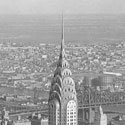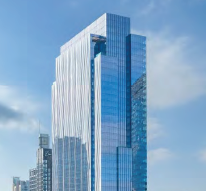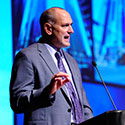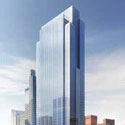Filter by
You must be a CTBUH Member to view this resource.

150 North Riverside
Building
Completed
2017
Office
Composite
LEED GOLD
220.8 m / 724 ft
51
1
72
27
7.11 m/s
136,010 m² / 1,463,999 ft²
You must be a CTBUH Member to view this resource.
You must be a CTBUH Member to view this resource.
Proposed
Construction Start
Completed
Usually involved in the front end design, with a "typical" condition being that of a leadership role through either Schematic Design or Design Development, and then a monitoring role through the CD and CA phases.
The Design Engineer is usually involved in the front end design, typically taking the leadership role in the Schematic Design and Design Development, and then a monitoring role through the CD and CA phases.
The Design Engineer is usually involved in the front end design, typically taking the leadership role in the Schematic Design and Design Development, and then a monitoring role through the CD and CA phases.
Other Consultant refers to other organizations which provided significant consultation services for a building project (e.g. wind consultants, environmental consultants, fire and life safety consultants, etc).
These are firms that consult on the design of a building's façade. May often be referred to as "Cladding," "Envelope," "Exterior Wall," or "Curtain Wall" Consultant, however, for consistency CTBUH uses the term "Façade Consultant" exclusively.
Material Supplier refers to organizations which supplied significant systems/materials for a building project (e.g. elevator suppliers, facade suppliers, etc).
You must be a CTBUH Member to view this resource.
Usually involved in the front end design, with a "typical" condition being that of a leadership role through either Schematic Design or Design Development, and then a monitoring role through the CD and CA phases.
The Design Engineer is usually involved in the front end design, typically taking the leadership role in the Schematic Design and Design Development, and then a monitoring role through the CD and CA phases.
The Design Engineer is usually involved in the front end design, typically taking the leadership role in the Schematic Design and Design Development, and then a monitoring role through the CD and CA phases.
The main contractor is the supervisory contractor of all construction work on a project, management of sub-contractors and vendors, etc. May be referred to as "Construction Manager," however, for consistency CTBUH uses the term "Main Contractor" exclusively.
Other Consultant refers to other organizations which provided significant consultation services for a building project (e.g. wind consultants, environmental consultants, fire and life safety consultants, etc).
These are firms that consult on the design of a building's façade. May often be referred to as "Cladding," "Envelope," "Exterior Wall," or "Curtain Wall" Consultant, however, for consistency CTBUH uses the term "Façade Consultant" exclusively.
Material Supplier refers to organizations which supplied significant systems/materials for a building project (e.g. elevator suppliers, facade suppliers, etc).
2018 CTBUH Awards
2019 CTBUH Awards
5 December 2018 - Awards
19 November 2018 - CTBUH News

19 November 2018 | Chicago
James Goettsch is the Chairman and Co-CEO of Goettsch Partners as well as the firm's design director, responsible for developing the firm's design talent and...

26 October 2015
Shelley Finnigan, ArcelorMittal; Barry Charnish, Entuitive; Robert Chmielowski, Magnusson Klemencic Associates
At the turn of the century, building design began to evolve. Improvements included indoor plumbing, the advent of escalators, and creation of the “Chicago window.”...
The 150 North Riverside site is located prominently at the confluence of the three branches of the Chicago River and less than one block away from one of Chicago's busiest commuter train stations. With exposed railroad tracks on the west side of the site and the city requirement for a public right-of-way on the east side, the remaining area on which to build was considered impossibly narrow, and the site sat undeveloped for decades.
Utilizing a unique core-supported structure with a very small footprint at grade, the design resolves the site challenges and provides a Class A office tower with efficient, column-free floor plates. The building’s unusual core-supported design results in a 221-meter tower resting atop a base that is merely 12 meters wide. The building is most noticeably significant for the narrow aspect ratio of its core; at 20:1 it is among the world’s thinnest. In consideration of this, the building also contains the first-ever application of a 12-tank tuned liquid mass damper (TLMD) at the tower’s top to manage both building drift and acceleration. With a total of 605,665 liters of water, the TLMD also provides city-approved fire protection storage tanks to supply the building’s sprinkler system, a creative dual purpose that is a Chicago first. The 16 sloping columns at the cantilevers feature the largest rolled-steel shapes ever used in a high-rise building in the U.S. The shapes are 1,092 millimeters deep and weigh 1,377 kilograms per meter.
This narrow building footprint accomplishes several strategic goals, in addition to facilitating column-free office space. It also creates a dramatic interior space in the lobby, while allowing for more than 75 percent of the property to be unenclosed outdoor space. The tower’s limited footprint and the angled sweep of its underside appear to usher the river past the site, breaking down the tower’s considerable mass and presenting a balanced composition.
Tenants and visitors enter through a dramatic, 27-meter-high lobby enclosed by a glass-fin wall hung from the structure above. The lobby features the “150 Media Stream,” a one-of-a-kind curated multimedia wall that showcases the work of local and other digital artists. The 46-meter-long, site-specific installation provides a lobby focal point while also addressing the transition between the opaque wall over the parking deck and the glass-fin wall above, using 89 LED blades, carefully choreographed in varying lengths and widths.
Building amenity spaces include a restaurant, bar, fitness center and conference center – all with water views. The condensed lobby and elevator cores open the majority of the 8,093-square-meter site as a landscaped public park, plaza and riverfront promenade.
Outside, the park and plaza provide more than 300 linear meters of seating, multiple assembly/event spaces and 110 meters of at-grade Riverwalk frontage, which has already become one of the most populated walkways for downtown commuters. Those who negotiate the grade change of the landscaped plaza on the west side of the tower find themselves in the unique position of being outdoors and at eye level with Chicago’s famous elevated train, without being in a station.
The structural acrobatics performance has paid off commercially as well as urbanistically, taking what was once deemed an unbuildable site and creating an optimal mix of leasable floor space, public outdoor space, and semi-public indoor space, complemented by custom-designed artwork.
2018 CTBUH Awards
2019 CTBUH Awards

19 November 2018 | Chicago
James Goettsch is the Chairman and Co-CEO of Goettsch Partners as well as the firm's design director, responsible for developing the firm's design talent and...

30 May 2018 | Chicago
The 150 North Riverside site is located prominently at the confluence of the three branches of the Chicago River and less than one block away...

03 November 2016 | Chicago
As Chairman and CEO of Magnusson Klemencic Associates, Ron Klemencic has played an active role in shaping the direction of the structural engineering community. His...
.jpg)
26 October 2015 | Chicago
In urban centers dominated by tall buildings, access to outdoor space is important. We will explain how two urban office building developments provide valuable outdoor...

26 October 2015
Shelley Finnigan, ArcelorMittal; Barry Charnish, Entuitive; Robert Chmielowski, Magnusson Klemencic Associates
At the turn of the century, building design began to evolve. Improvements included indoor plumbing, the advent of escalators, and creation of the “Chicago window.”...

26 October 2015
James Goettsch, Goettsch Partners
In urban centers dominated by tall buildings, access to outdoor space is important. We will explain how two urban office building developments provide valuable outdoor...
5 December 2018
These projects will be represented at the CTBUH 2019 Tall + Urban Innovation Conference, where they will compete in real time for winning distinctions in each category.
19 November 2018
James Goettsh, Goettsch Partners, and Anthony Scacco, Riverside Investment & Development, sat down with CTBUH to discuss the drivers and challenges behind 150 North Riverside.
22 August 2018
CTBUH has released a Tall Buildings in Numbers (TBIN) interactive data study on the world's tallest buildings with dampers.
16 December 2016
As an annual tradition, CTBUH HQ staff are given a tour of tall building during their holiday celebrations. This year, the staff visited 150 North Riverside by Goettsch Partners.
30 October 2015
CTBUH 2015 delegates toured Chicago and its architectural marvels. From recently constructed skyscrapers to the modern marvel of Willis Tower, which held the tallest title for 25 years.
Subscribe below to receive periodic updates from CTBUH on the latest Tall Building and Urban news and CTBUH initiatives, including our monthly newsletter. Fields with a red asterisk (*) next to them are required.
View our privacy policy